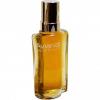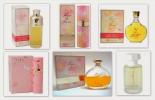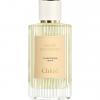 Success Smells Sweet to Betty Busse, the Woman with the Million-Dollar Nose
Success Smells Sweet to Betty Busse, the Woman with the Million-Dollar NoseIn the great sniff-off that characterizes the fiercely competitive (and lucrative) fragrance industry, the name—and nose—of Betty Bussé is in a class unto itself.
The highest-paid female perfumer in the world ($100,000 a year), Bussé is the nose de plume behind such award-winning scents as Aviance for Prince Matchabelli and Chloe for designer Karl Lagerfeld. And in an industry which insists on anonymity among its chemical wizards, she is recognized as the developer of Estée Super, Rudi Gernreich and Rivage perfumes. To date she has 25 men’s and women’s fragrances to her credit.
“For Americans,” says the French-born Bussé, 45, “the perfume has to have power—sock! Europeans prefer something more subtle.” And if anyone wonders why men or women wear a fragrance—of any potency—Bussé has her own somewhat ethereal explanation: “It’s a way for a person to occupy more space, to have more volume. But it is like music—you must follow it through from the first note to the last.”
Bussé grew up outside Marseilles and developed her sense of scents during summers spent with her perfumer uncle near Grasse, the perfume capital of France. But her parents insisted she train for something more pragmatic than chasing the essence of rosebuds, and Bussé gave law school three years before realizing “it was not for me—I am too creative.” After marriage to an American businessman, she moved to New York and began an apprenticeship with International Flavors & Fragrances, where she soon created her first olfactory coup—Fiamma for Marcella Borghese.
Perfumers, even the greats, historically remain out of sight, taking a back seat to the names on the labels they have created. But when Betty failed to achieve even industry acknowledgment for her successes, her creative nose was pushed a little too far out of joint. She left IFF to become chief perfumer for one of its competitors, Creations Aromatiques.
Bussé’s job there is to concoct fragrances a client will purchase as its product, often working against other perfumers bidding for the same business. Some of her creations may become elegant and expensive perfumes, while others enliven anything from shampoos to deodorants.
Her biggest challenge, of course, is creating a scent that will bear a famous designer’s name. “It is fun to reproduce in a perfume what a designer tried to do in the way of clothes,” Betty says. Designers’ demands can sound very abstract. “One couturier will ask for something that smells like metal, or perhaps basil. But I understand their language,” she says.
Translating those ideas into formulas can be literally worth millions, and all formulas at the lab are kept under lock and key. In her work Betty draws upon a staggering “fragrance memory.” “You’ve got to know them, memorize them, classify them all inside your head. There is no other way,” she says.
Known in the business as a classic perfumer, Bussé esche’ws shortcuts and synthetic ingredients whenever possible. “This jasminal,” she says, lifting a vial of fragrance derived from a flower, “is just the beginning. It is like the mannequin in the window. Now I dress it.”
To any beginning scent, she adds touches from her memory bank—usually something a little “leafy, mossy, fruity or woody. It is important to be close to nature,” Bussé explains.
Now divorced, Bussé lives in rustic splendor high on a hill in the New Jersey countryside, well out of sniffing range of the closest industrial pollution. At home she keeps her senses honed with rose petal baths—and even the occasional nibbling of flowers. “Nasturtiums are good,” Betty explains, “and pink roses, but not red. They are too bitter.”




 Borghese
Borghese Chloé
Chloé Estée Lauder
Estée Lauder Karl Lagerfeld
Karl Lagerfeld Nina Ricci
Nina Ricci Prince Matchabelli
Prince Matchabelli Aviance, Prince Matchabelli
Aviance, Prince Matchabelli Chloe, Chloe2
Chloe, Chloe2 Eau de Fleurs2
Eau de Fleurs2 Estēe, Estee Lauder6
Estēe, Estee Lauder6 Fiamma, Borghese
Fiamma, Borghese Fleur de Fleurs Édition Limitée Numérotée, Nina Ricci
Fleur de Fleurs Édition Limitée Numérotée, Nina Ricci Fleur de Fleurs, Nina Ricci6
Fleur de Fleurs, Nina Ricci6 Tuberosa 1974, Chloe3
Tuberosa 1974, Chloe3